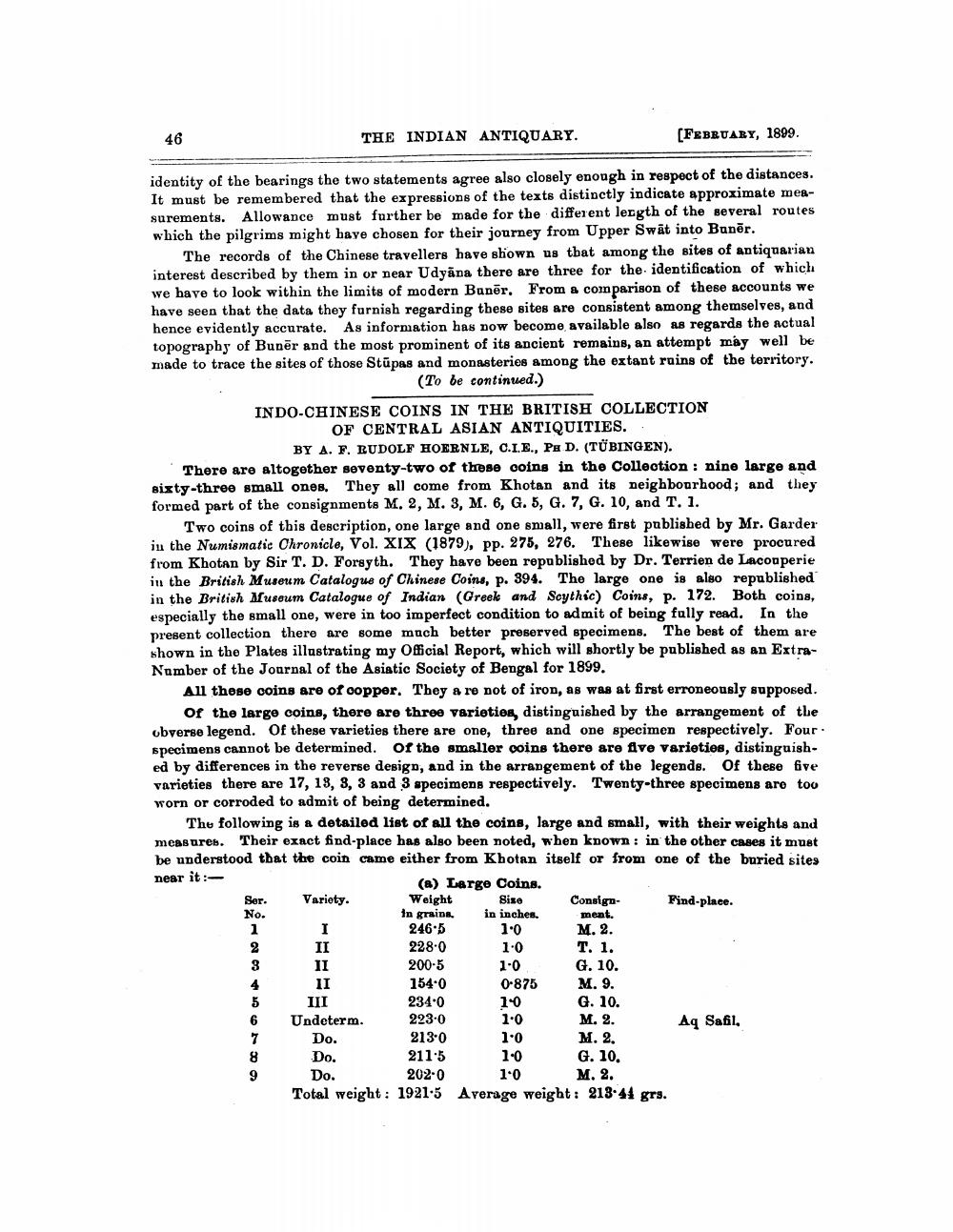________________
46
THE INDIAN ANTIQUARY.
[FEBRUARY, 1899.
identity of the bearings the two statements agree also closely enough in respect of the distances. It must be remembered that the expressions of the texts distinctly indicate approximate measurements. Allowance must further be made for the different length of the several routes which the pilgrims might have chosen for their journey from Upper Swat into Banēr.
The records of the Chinese travellers have shown us that among the sites of antiquarian interest described by them in or near Udyana there are three for the identification of which we have to look within the limits of modern Banēr. From a comparison of these accounts we have seen that the data they furnish regarding these sites are consistent among themselves, and hence evidently accurate. As information has now become available also as regards the actual topography of Bunēr and the most prominent of its ancient remains, an attempt may well be made to trace the sites of those Stūpas and monasteries among the extant ruins of the territory.
(To be continued.)
INDO-CHINESE COINS IN THE BRITISH COLLECTION
OF CENTRAL ASIAN ANTIQUITIES..
BY A. F. RUDOLF HOERNLE, C.L.E., PHD. (TÜBINGEN). There are altogether seventy-two of these coins in the Collection : nine large and sisty-three small ones. They all come from Khotan and its neighbourhood; and they formed part of the consignments M. 2, M. 3, M. 6, G. 5, G. 7, G. 10, and T. 1.
Two coins of this description, one large and one small, were first published by Mr. Garder in the Numismatic Chronicle, Vol. XIX (1879), pp. 275, 276. These likewise were procured from Khotan by Sir T. D. Forsyth. They have been republished by Dr. Terrien de Lacooperie in the British Museum Catalogue of Chinese Coins, p. 394. The large one is also republished in the British Musoum Catalogue of Indian (Greek and Scythic) Coins, p. 172. Both coins, especially the small one, were in too imperfect condition to admit of being fully read. In the present collection there are some much better preserved specimens. The best of them are shown in the Plates illustrating my Official Report, which will shortly be published as an ExtraNumber of the Journal of the Asiatic Society of Bengal for 1899.
All these coins are of copper. They are not of iron, as was at first erroneously supposed.
of the large coins, there are three varieties, distinguished by the arrangement of the obverse legend. Of these varieties there are one, three and one specimen respectively. Fourspecimens cannot be determined. Of the smaller coins there are five varieties, distinguished by differences in the reverse design, and in the arrangement of the legende. Of these five varieties there are 17, 18, 3, 3 and 3 specimens respectively. Twenty-three specimens are too worn or corroded to admit of being determined.
The following is a detailed list of all the coins, large and small, with their weights and measureb. Their exact find-place has also been noted, when known: in the other cases it must be understood that the coin came either from Khotan itself or from one of the buried sites near it :
(a) Large Coins. Ser. Variety. Weight Size Consigo- Find-place. No.
in grains. in inches. ment. 246.5
1.0
M. 2. II 228.0
1.0
T. 1. 200-5 1-0 G. 10. 11
154-0 0-875 M. 9. III
234.0 10 G. 10. Undeterm 223-0
M. 2. Aq Safil. Do. 213-0
1.0 M. 2. 211:5
1-0
G. 10. Do. 202-0
1.0 M. 2. Total weight : 1921.5 Average weight: 218.44 grs.
II
1.0
Do.




